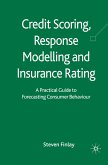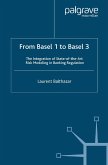In today s business environment the risk management of consumer lending has become critical to protect the interest of both lenders and consumers. Following the presentation of the main issue in the consumer credit market and the introduction of credit scorecards, I analyze a Hungarian dataset of loans for personal needs. The analysis evaluates comparatively the prediction accuracy of several methods used in consumer credit scoring. I have documented the superior performance of logit and neural estimations. I also have found supporting evidence for the use of WOE as inputs in estimating predicted default probabilities. Following Siddiqui (2006), I have used a linear transformation to compute a traditional statistical scorecard. Developing easy to interpret statistical scorecards is essential when the lender has a legal obligation to explain its refusal of an application.
Bitte wählen Sie Ihr Anliegen aus.
Rechnungen
Retourenschein anfordern
Bestellstatus
Storno








